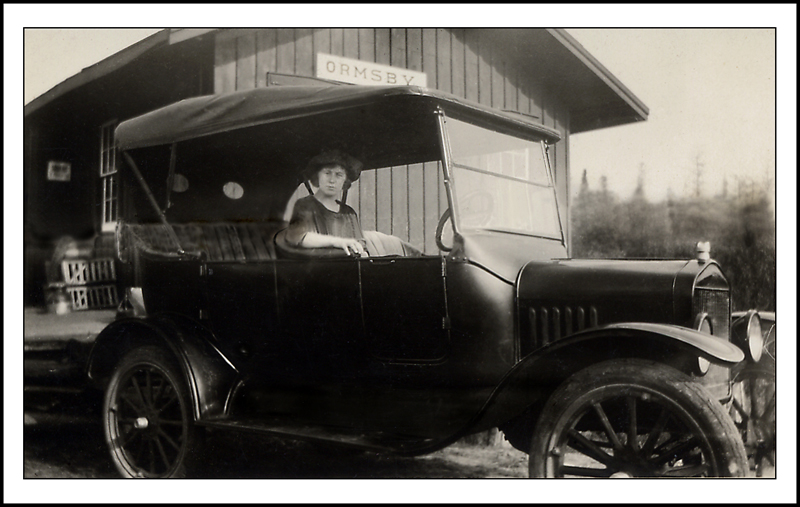ORMSBY
and the Ghosts of The Old Hastings Road
The wee village of Ormsby is one of six 'ghost towns' that exist along The Old Hastings settlement road between Madoc and Bancroft. While Umphraville, Thanet, Murphy Corners, and Glanmire have all but disappeared, Ormsby still survives, situated as it is on Hwy 620, five minutes east of Coe Hill.
The Ormsby General Store c.1912
Originally called Rathbun, after the logging company, the town thrived in the late 1800s as the last stop on the Central Ontario Railway. On a Friday night it wasn't unusual to see 30 teams and wagons pulling in at the station to load supplies dropped from the train. Settlers, farmers, hunters and trappers came from all around, many stopping at the hotel bar until the wee hours, perhaps contributing to Ormsby's reputation as a wild town.
Maybe it was the need for a 'sobering' influence that led to the establishment of 3 churches along with 2 hotels, 3 stores, a school, a blacksmith shop, an Orange hall and a Sons of England hall.
As the railroad was extended to Bancroft in 1900, and the lumber industry disappeared, most of Ormsby disappeared as well. The Park family ran the general store from 1915 to 1975 and soon after all that was left were a handful of homes.
Kate, George and Billy Park c.1905
Since 2003 however, interest and activity in the village have returned. Of the five century buildings that remain, the general store is now The Old Hastings Mercantile & Gallery, and the one-room school has been restored and given new life as The Old Ormsby Schoolhouse “Educated Dining” & Tea Room, now closed, and soon to open in 2025, a boutique rental facility.
Sadly, the Catholic Church stopped weekly Mass in 2023.
Jean Park at the Ormsby Train Station c.1930s.
St Bernadette’s Catholic Church c.1912
The Old Ormsby Schoolhouse “Educated Dining” & Tea Room.
The Old Ormsby Heritage Church (Est. Presbyterian 1904).
The Presbyterian Church has also been restored with oil lamps, wood stove, and tin walls and ceiling.
Renamed The Old Ormsby Heritage Church, it is now open daily to the public in the summer, and is used for anniversary and Christmas services, as well as weddings and special concert events.






